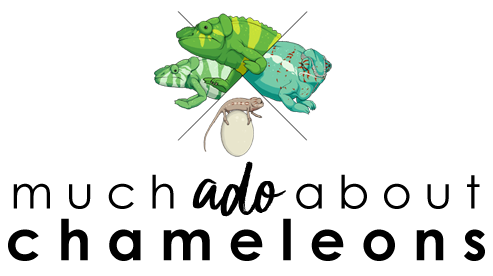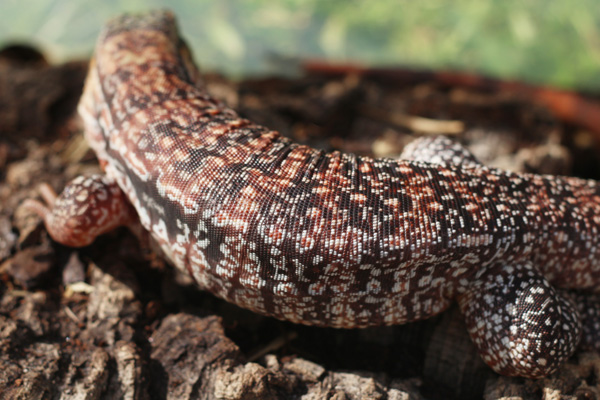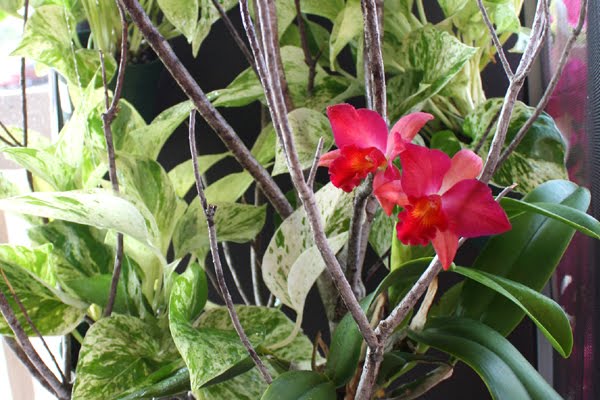Around here hornworms (Manduca sexta) have been hit or miss as far as a feeder favorite in the last couple years. I used to have a lot of success offering green (the original, natural color) hornworms that came with the dark mulberry diet, but since the blue-phase worms have become all the rage they are just not as popular with my chameleons. Why this switch in the market has occurred I'm not sure, perhaps people buy the blue worms (which gain their color via their diet) are prettier and thus are purchased more often. I wouldn't know, but at any rate, it seems like my chameleons are not thrilled with the taste of whatever the blue worms are being gut-loaded on. They will eat one or two but refuse more than that.
So this poses a problem for a keeper like me who wants to provide a varied diet that includes hornworms (since I find them readily available locally.) What has happened, especially now that I only keep large chameleons, is that instead of feeding off the worms I will let them pupate and turn into moths, which are definitely a favorite! So in this entry I will explain how I pupate my hornworms, which may be useful for others who also want to grow out the worms into moths for the purpose of breeding your own feeders.
I started off with a typical pod of hornworms, the turned-blue variety, and allow them to grow out with their food supply, feeding off a few of the smaller worms if I can. My pod contained 15 worms, and the cup will not come with enough food to grow out all 15 so I fed off as many as my chameleons and one gecko would take. You can see below that they started off at a size of an inch-inch and a half.
After just a few days (about 5) you can see that the worms have grown substantially. The worms are now several inches long and are approaching their maximum size.
One of the larger worms. In blue they really are beautiful! This aqua color is my favorite color, so it does sadden me that my chameleons aren't dying to eat them just on the basis of color alone!
When the worms have reached their maximum size you will notice that they will drop down to the floor of the container (remember that you keep the cups standing on their lid, with the food up at the top so the poop/frass can fall to the lid and be dumped out easily.) At that point you'll see them wander the bottom restlessly, start to dull in color, and lose all interest in food. That's when they're ready to pupate!
You can see below that they are no longer that vibrant aqua-blue, they are starting to dull and yellow. Not all of the worms will survive and pupate into moths, some worms don't form their chrysalis properly and others never emerge from theirs, you just have to see.
Since they are ready I will take a plastic container with a fair amount of floor space (like this one below) and fill it up with 3-4" of moist soil. The worms will begin to bury themselves into the soil, a process which may take a few hours. But eventually they all find a corner or nook to call their own under the soil and begin the process of morphing. I will check the soil every couple days and spray it if it seems like it is drying out. I do usually try to keep them with a lid on because when they emerge they can make a huge mess (you'll see what I mean later) so the lid keeps in the humidity as well.
So fast-forward almost 3 weeks from they day they transformed, the first moth finally emerged! When they emerge they can sometimes excrete a yellowish liquid all over the place, so that's why I keep them in a container with a closed lid. They emerge with their wings folded and will take a while for them to unfold, so at this point they are the perfect size for chameleons like veileds or panthers that might be intimidated by their size once the full wingspan stretches out.
 |
| "Oh, what do we have here? Deliciousness?" |
So do your chameleons love these moths as feeders too? Have you ever tried offering them? Let me know in the comments below!








































































